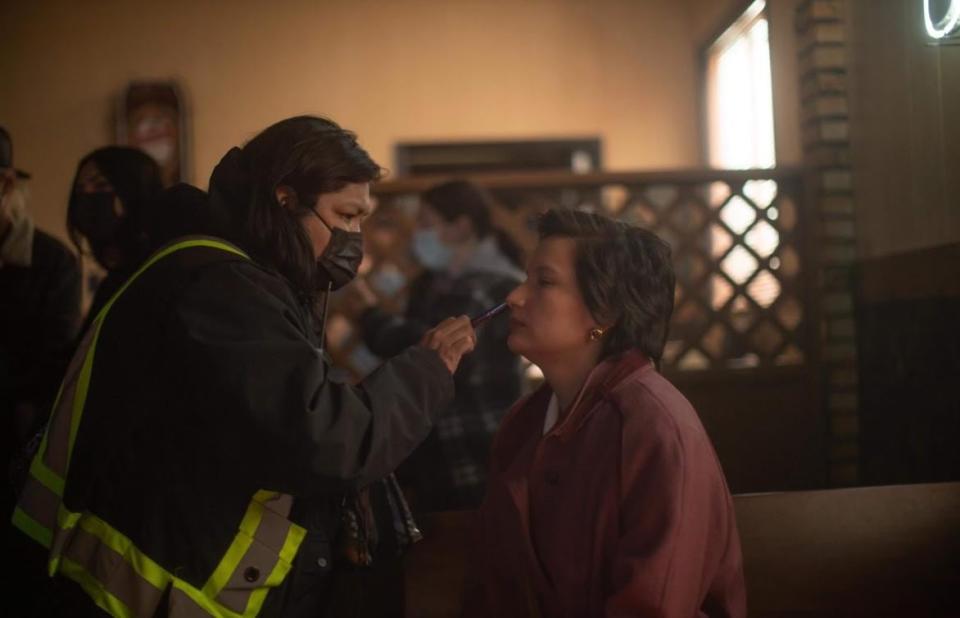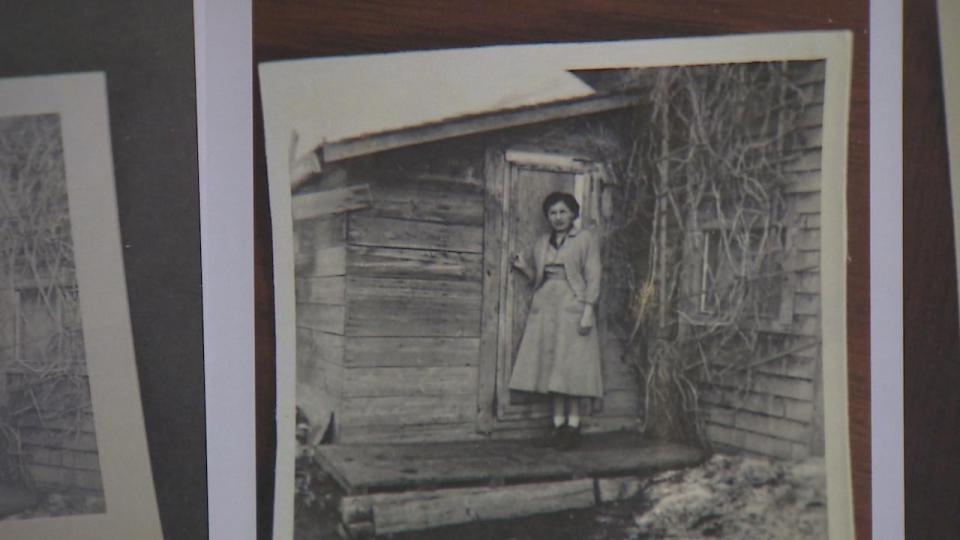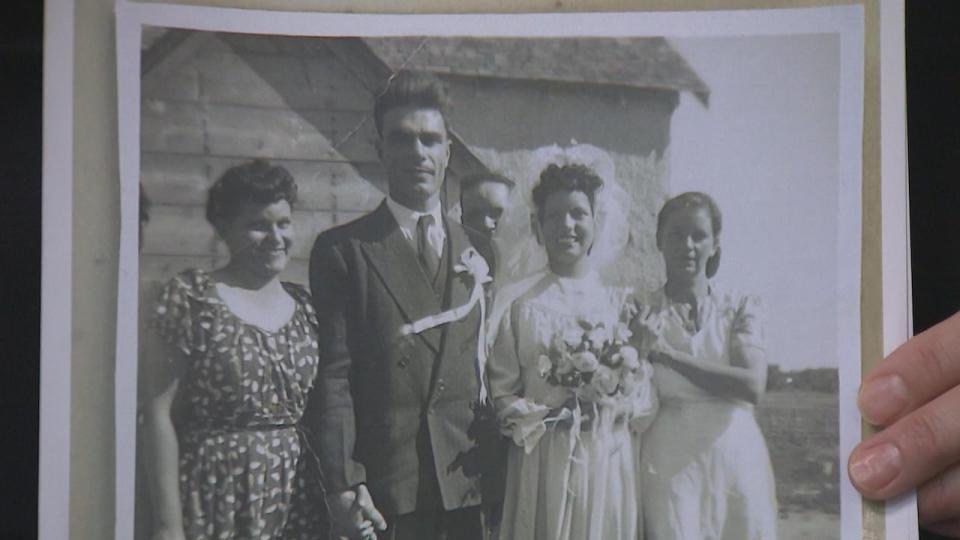Sask. Indigenous artists working on Little Bird win big at Canadian Screen Awards
Everywhere she goes, Nina J. McArthur has been carrying a shiny gold trophy in her backpack.
She won the Canadian Screen Award for best makeup artist for her work on the show Little Bird. McArthur said the victory was bittersweet because it forced her to relive the trauma of being in the foster system and residential schools.
"I've been grieving for so long," she said.
"But after I won it, I was like, 'If I'm allowed to grieve for a whole year, I should be allowed to celebrate for a whole year.'

Little Bird is the story of a young woman taken from her Indigenous parents as a five-year-old who sets out to find her birth family in Saskatchewan.
The show sheds light on the Sixties Scoop, when thousands of Indigenous children were torn from their families.
McArthur, who's from Pheasant Rump Nakota First Nation, can relate to many parts of that experience.
"So much of the script has been a part of my life, coming from the foster system, there were times when as a child I was taken away from my parents. It was very triggering while we were shooting it," McArthur said.
She also went to Lebret Residential School in southern Sask. — one of the last residential schools to shut down in 1998.
Mcarthur wasn't the only one from Sask. who took home a statue at the Canadian Screen Awards, which were held at the end of May in Toronto.
Charity Gadica won the award for best costume design for her work in Little Bird.

The Cree woman didn't just bring her talent, she also brought photos and stories from her family that were used to create the set and decide what the actors would wear.
"The characters in Little Bird are our family, they are our relatives, they exist in our family photos and we just have to find them because we're telling a true story," she said.
Gadica said it was important for her to show the love that existed in the homes of Indigenous people when the government was abducting their children.
"People have this idea of what original Canadians looked like, when we were just living on the land, and people's idea of what it was is very different from what it really was," she said.

That same photo was also used to recreate the set for the home in the show from where the protagonist was abducted. Gadica's family is from Peepeekisis Cree Nation, and the show is set on a reserve in the same area in the Qu'Appelle Valley.
Many other photographs from Gadica's family and childhood were used to set up the show.

Gadica said her love for sewing came from her grandmother, Dorothy Pearl Pinay.
"I've always been a hand sewer, which is weird. Nobody likes hand sewing, people like to use machines and I love the fine details with my hands. It's part of me," she said.
Gadica said working on the show meant a lot to her because her grandmother who was sent to residential school passed away in 2000 without receiving an apology for the trauma she endured.
"It's part of my reconciliation and reclaiming what I lost," Gadica said.
"My grandmother gets to live on now. Her story is out there and when you do watch Little Bird, she's there, she's on camera. Her photo is sitting there in many places. So it's a way to just take back what was taken."

 Yahoo News
Yahoo News 
